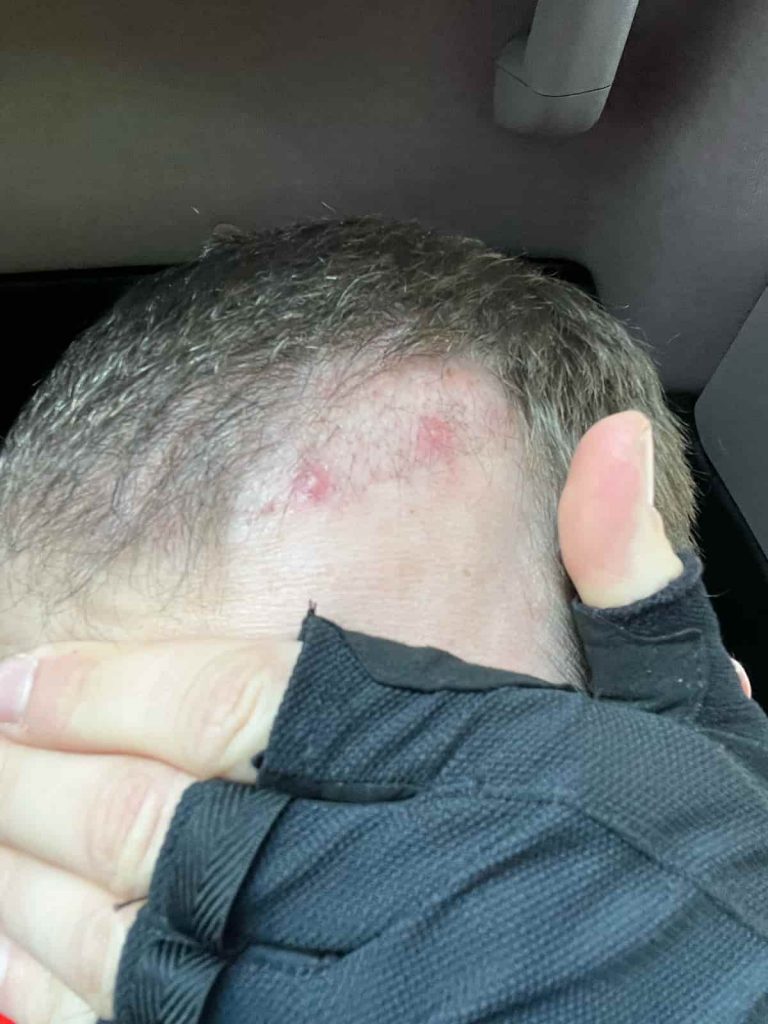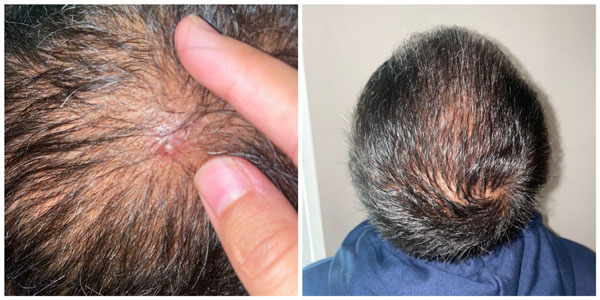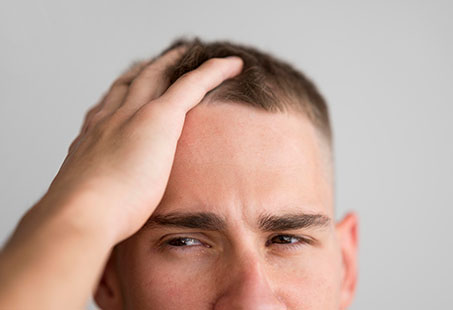Many people experience breakouts on their scalps and foreheads after undergoing a hair transplant. Having pimples form on newly transplanted hair follicles can make you worry that your final results will be compromised. Good news: pimples after hair transplants are usually nothing to worry about, “usually” being the operative word here.
There are certain instances in which the pimples on the scalp can be indicative of a more serious problem. Also, seeing a pimple, many people have the uncontrollable urge to pop it, which can only exacerbate your problem. That is why you need to know what causes this breakout and how to properly deal with it.
What Causes Pimples After A Hair Transplant?
Scalp acne is a common side effect of hair transplants. Usually, it occurs due to the growth of the new hair, so you’ll notice these pimples in the recipient areas.
However, pimples can also be scattered throughout the donor area due to different reasons. Let’s take a closer look at all the causes of scalp acne after a hair transplant.
Growing Hair
If you have a beard, you’d probably know about beard acne. When the new hair is growing out, sometimes, the pore can get clogged by dead skin cells, bacteria, and oils. That ends up forming a pimple.
In the same way, when new hair is growing after a hair transplant, some pores can get clogged, and you’ll see a pimple in its place. Usually, scalp acne appears during the first 2-3 months after surgery since hair growth begins around this time. However, it can also be seen 2 days to 6 months after the surgery.

Keep in mind that this type of acne can affect both the recipient and donor area, but typically, it’s the former. Since this is a part of the recovery, it is normal, so you don’t need to worry. The breakout is not always massive; you might just have 1-2 pimples at most.
Ingrown Hair
Again, those who shave know about ingrown hairs. An ingrown hair may seem like a pimple (more so if it gets filled with pus due to infection), but it’s different. An ingrown hair occurs when the hair curls into the skin instead of coming out. The sharp edges created by shaving the hair can do that.
Generally, patients have their heads shaved before a hair transplant. As the hair grows and tries to emerge, the sharp edges may cause problems. As a result, you can have ingrown hairs in the recipient and donor areas. It looks like a red, swollen bump on the skin that may feel itchy. However, if it gets infected, you’ll also see pus and even experience pain.
Folliculitis
Inflammation of a damaged hair follicle is referred to as folliculitis. And this can also end up looking like a pimple.
This damage to the hair follicle can be physical or chemical. So, folliculitis isn’t always caused by infectious microorganisms; sometimes, it is of the non-infective type. It depends on what caused the folliculitis in the first place.
According to the author of Hair and Scalp Disorders, folliculitis after hair transplant has an incidence rate of 1.1 to 20%. And it is not always severe; it can be mild, affecting only the outermost skin. Keep in mind that this can also affect the donor and recipient areas.
Health Conditions
Certain illnesses like diabetes or blood disorders can increase the risk of a more severe form of scalp acne. It can extend into the deeper layers of the skin. These bumps can be quite painful and get filled with pus. You may also notice an increase in their size. Since this is more serious, get in touch with your doctor as soon as possible.
Neglect In Aftercare
Negligence in aftercare can also clog the pores and cause scalp pimples. For instance, if you’re out in the sun for too long, sweat can cause an infection. Wearing caps can do the same.
To speed up the recovery process and improve results, many people apply minoxidil to their scalps soon after surgery. This can end up clogging the pores. Going into hot tubs can cause its own type of folliculitis. Therefore, you need to be very careful about these things after your hair transplant.
Should You Be Worried About Pimples On Scalp After Hair Transplant?
Most of the time, hair transplant pimples go away on their own. Usually, it’s the growing hair that causes these pimples to form. In any case, it’s a good idea to get in touch with your doctor. But you can rest assured that you’ll recover successfully without any damage to your hair grafts.

Is It Okay To Pop Pimples After A Hair Transplant?
You should not pop any pimples on your scalp after a hair transplant. That’s because it increases the risk of infection and scarring. Not just that, but it can also permanently damage the hair grafts, which will affect your final results.
Do not try squeezing the pus out with your fingers. Also, don’t poke holes into your skin using a needle (even if you have sterilised it) for the pus to come out. In most cases, these scalp pimples go away on their own (in days or weeks depending on how large they are). So, the best thing you can do is leave them alone.
How To Treat Pimples After A Hair Transplant?
If you have scalp acne or bumps after a hair transplant, you should first get in touch with your hair transplant surgeon. It may be nothing, or it may be a deeper skin infection. Only your doctor can give an accurate diagnosis. And it’s only your doctor who will provide you with a treatment plan accordingly.
If it’s not an infection, surgeons usually recommend the use of warm compresses. You have to leave a warm compress on your skin for 15-20 minutes 2-3 times a day. Additionally, you’d be advised to massage your scalp while shampooing.
However, if it’s an infection (and a serious one at that), you may be prescribed an oral and/or topical antibiotic. Sometimes, patients are also given steroid injections. It’s important that you can eye out for any signs of infection, such as redness, swelling, pain, pus, fever, etc.
Why Do I Have Pimples On My Forehead After Hair Transplant?
It is possible for you to experience a breakout on your forehead after your hair transplant. Many people notice that their forehead feels oilier. This is because solutions and medicines injected into your scalp are draining from the skin.
Additionally, the new hair follicles will produce sebum. Together, these factors can result in a breakout. Your pores can get clogged easily, and you’d end up with acne. Here, what you need to do is make sure that you keep your skin clean. And do not try picking at those pimples, as that can leave bad scars.
How To Prevent Pimples On The Scalp After Hair Transplant?
While it’s not always possible to prevent pimples after a hair transplant, you can do some things to make sure that your problem doesn’t worsen.
- Make sure to wash your scalp as instructed while gently massaging it with your fingertips (never use nails).
- Take the medications prescribed to you soon after surgery.
- Stay out of the sun, preferably in cooler and dust-free areas.
- Do not shave or pluck any hair on your scalp unless you’re cleared by your surgeon.
- Do not cover your scalp.
- Do not get into saunas, hot tubs and baths or go swimming.
- Take good care of your health (a healthy immune system can fight infections).
Make sure to do as your surgeon recommends to recover as quickly as possible.
Conclusion
Pimples on the scalp are common after a restoration surgery. The growing hair is usually to blame. However, most of the time, there’s no need for alarm. You can rest assured that these pimples will eventually go away. They also won’t affect the final results of your surgery.
Sometimes, however, you may have an infection. That is why it’s always best to consult your doctor if you notice any bumps or pimples on your scalp. Meanwhile, make sure to keep following the aftercare instructions.


